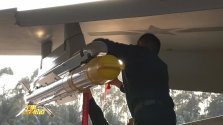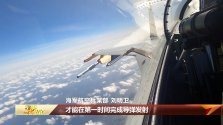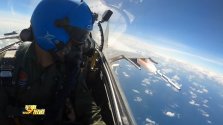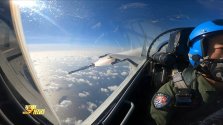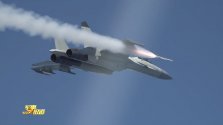SM-6 and PAC-3 MSE are not bad comparisons for performance/size.
Both are fairly new missiles (MSE a bit less so) so one can assume their electronics are fairly compact and leave a lot of room for propulsion.
PL-17 seems to be around 5.7 m long and 0.32 m in diameter.
SM-6 is some 6.5 meters long with booster or 6 m long without it. Diameter being 0.34 m.
PAC3 MSE is allegedly 5.2 m long, no booster, and approx 0.32 m in diameter.
Pac3 mse is credited with approx 100 km range against fighter jet type targets.
SM-6 is credited with a beyond 240 km range, with some estimating it at 370 km or so.
If a pac3mse had a booster getting it to 15 km and mach 1.5 or whatever, it'd surely add quite a bit of range.
Also, sm-6's booster basically gets the first stage to a speed of several mach, and altitude roughly comparable to one of a jet aircraft.
this resource estimates 10 second burn for sm-2 booster. That should amount to roughly 9-13 km of altitude before the booster burns out. (assuming mach 3-4 for the booster)
On the other hand, we already have indications that a much smaller pl-15 can reach 200 km.
With all that, PL-17 reach seems unlikely to be under 300 km, at the very least. But with a more plausible performance bracket being 350-400 km. And ranges approaching even 500 km not being entirely unrealistic. Again, this is all against a certain kind of targets, not necessarily jet fighters but subsonic airliners like force multiplier type planes.
Both are fairly new missiles (MSE a bit less so) so one can assume their electronics are fairly compact and leave a lot of room for propulsion.
PL-17 seems to be around 5.7 m long and 0.32 m in diameter.
SM-6 is some 6.5 meters long with booster or 6 m long without it. Diameter being 0.34 m.
PAC3 MSE is allegedly 5.2 m long, no booster, and approx 0.32 m in diameter.
Pac3 mse is credited with approx 100 km range against fighter jet type targets.
SM-6 is credited with a beyond 240 km range, with some estimating it at 370 km or so.
If a pac3mse had a booster getting it to 15 km and mach 1.5 or whatever, it'd surely add quite a bit of range.
Also, sm-6's booster basically gets the first stage to a speed of several mach, and altitude roughly comparable to one of a jet aircraft.
this resource estimates 10 second burn for sm-2 booster. That should amount to roughly 9-13 km of altitude before the booster burns out. (assuming mach 3-4 for the booster)
On the other hand, we already have indications that a much smaller pl-15 can reach 200 km.
With all that, PL-17 reach seems unlikely to be under 300 km, at the very least. But with a more plausible performance bracket being 350-400 km. And ranges approaching even 500 km not being entirely unrealistic. Again, this is all against a certain kind of targets, not necessarily jet fighters but subsonic airliners like force multiplier type planes.

